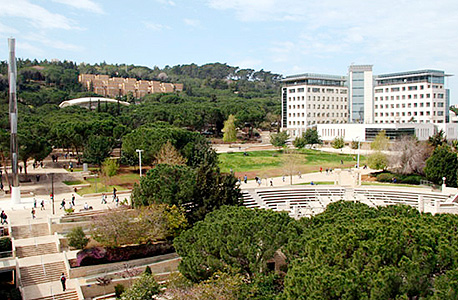Israel’s Brain Drain is Getting Worse, Says New Report
In 2014, for every person with an academic degree that returned to Israel, 2.6 such people left. By 2017, the number of negative emigrants rose to 4.5 to each person returning, a 73% increase
16:4130.05.19
Israel’s brain drain problem is getting worse, according to a new study published
Thursday by Dan Ben-David of the Shoresh Institute for Socioeconomic Research. The study looks at the trends and underlying determinants of academics and skilled professionals leaving Israel—and its conclusions are a cause for concern.
 The Technion Israel Institute of Technology. Photo: Technion
The Technion Israel Institute of Technology. Photo: Technion
For daily updates, subscribe to our newsletter by clicking here.
According to Ben-David, Israel is in a uniquely precarious position because out of a population of almost 10 million, only a small group of people, less than 130,000, are keeping the country’s economy, healthcare system, and “underlying university bedrock near the pinnacle of the developed world.” For example, while only 2.7% of people employed in the public sector are in tech manufacturing fields, in 2015 they accounted for 40.1% of all Israeli exports.
 The Technion Israel Institute of Technology. Photo: Technion
The Technion Israel Institute of Technology. Photo: Technion
This is the same group that enables Israel to keep its competitive militaristic edge in a hostile area, Ben-David added. Therefore, the emigration of even several tens of thousands of people could be catastrophic to Israel’s future.
According to the study, in 2014, for every person with an academic degree that returned to Israel, 2.6 such people left. By 2017, the number of negative emigrants rose to 4.5 to each person returning, a 73% increase. Furthermore, it is the best-educated that tend to seek their fortune elsewhere—"the better the institution of higher learning, the greater the emigration rate of its graduates,” according to the author.
Engineering or STEM graduates are more likely to emigrate than social studies or humanities graduates: 9% compared to 7% (of those graduating universities and not colleges). This is especially dire considering Israel had the lowest number of medical school graduates per capita among all OECD countries in 2016, as due to local educational limitations more and more are earning their degrees abroad, and staying there. Between 2006 and 2016, the number of Israeli physicians practicing outside of Israel rose from 9.8% to 14%.
When it comes to academics, the number of Israelis in tenured or tenure-track positions in top 40 academic departments in the U.S., meaning top minds that are unlikely to return to Israel, is also disproportionally high. In the chemistry field, as of January 2019, they equaled 10% of all the faculty members in Israel’s research universities. In Physics, they equaled 11%. In computer science and economics they equaled 21% and 23%, respectively. In business, the number was as high as 43%.
While a major draw of American universities are the higher salaries and research grants they offer, another issue is Israel’s relatively high consumer prices compared to OECD countries. Household final consumption prices in Israel are 28% higher than in the U.S. and 66% higher than the OECD average, according to Ben-David.
Related stories:
- Israel’s Business Sector Weighs In on the Challenges Facing the New Government
- Majority of Israelis Do Not Support Immigration—Even of Educated, Highly Skilled Migrants
- Supporting Arab Entrepreneurs Is Vital for Israeli Economy, Says Innovation Authority Chief
Israel’s labor productivity stagnation, its increasing income tax burden on the educated population, and its rising living costs all threaten the country’s ability to “to retain its most skilled citizens,” Ben-David wrote. And while the number of emigrants may be objectively small, it disproportionally affects the most educated groups, those who help keep Israel at the technological front.
To overturn the tides, according to Ben-David, a “sharp pivot in national budgetary priorities” is required. That includes investment in education and infrastructure for minorities in Israel, actions that will, in turn, increase the productivity of much of Israel’s working population.



